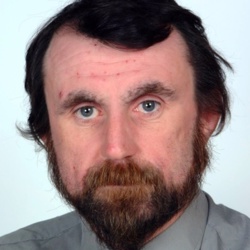Biography
Steve Collins received a BSc in Theoretical Physics from the University of York in 1982 and a PhD in Theoretical Physics from the University of Warwick in 1986. He was then employed as a government research scientist, working on semiconductor device physics and analogue circuit design.
In November 1997, Steve moved to the Department of Engineering Science at the University of Oxford. Initially he continued his work on wide dynamic range CMOS cameras. However, in 2012 he started working on various approaches to improving the performance of receivers for Visible Light Communications and this is now the focus of his research.
Most Recent Publications
Fluorescent antenna based on Förster resonance energy transfer (FRET) for optical wireless communications
Fluorescent antenna based on Förster resonance energy transfer (FRET) for optical wireless communications
Capillary-based fluorescent antenna for visible light communications.
Capillary-based fluorescent antenna for visible light communications.
A comparison of VLC receivers that incorporate two different SiPMs
A comparison of VLC receivers that incorporate two different SiPMs
A roadmap for Gigabit to terabit optical wireless communications receivers
A roadmap for Gigabit to terabit optical wireless communications receivers
Figure data for "A roadmap for Gigabit to Terabit optical wireless communications receivers"
Figure data for "A roadmap for Gigabit to Terabit optical wireless communications receivers"
Research Interests
In 2012 Steve started working on receivers for visible light communications based upon arrays of single photon avalanche diodes. Then in 2014, he was the lead author on the first paper to suggest that fluorescence could be exploited to create large-area, wide field-of-view optical concentrators for visible light communications.
The current focus of his research interests is the development of these two technologies and their application to visible light communications and contamination detection in the food industry and hospitals.
Research Groups
Most Recent Publications
Fluorescent antenna based on Förster resonance energy transfer (FRET) for optical wireless communications
Fluorescent antenna based on Förster resonance energy transfer (FRET) for optical wireless communications
Capillary-based fluorescent antenna for visible light communications.
Capillary-based fluorescent antenna for visible light communications.
A comparison of VLC receivers that incorporate two different SiPMs
A comparison of VLC receivers that incorporate two different SiPMs
A roadmap for Gigabit to terabit optical wireless communications receivers
A roadmap for Gigabit to terabit optical wireless communications receivers
Figure data for "A roadmap for Gigabit to Terabit optical wireless communications receivers"
Figure data for "A roadmap for Gigabit to Terabit optical wireless communications receivers"
DPhil Opportunities
I am open to supporting DPhil students with an interest in:
- Receivers for Visible Light Communications
- Sensitive optical detectors that can detect contamination in the food industry and hospitals.
Most Recent Publications
Fluorescent antenna based on Förster resonance energy transfer (FRET) for optical wireless communications
Fluorescent antenna based on Förster resonance energy transfer (FRET) for optical wireless communications
Capillary-based fluorescent antenna for visible light communications.
Capillary-based fluorescent antenna for visible light communications.
A comparison of VLC receivers that incorporate two different SiPMs
A comparison of VLC receivers that incorporate two different SiPMs
A roadmap for Gigabit to terabit optical wireless communications receivers
A roadmap for Gigabit to terabit optical wireless communications receivers
Figure data for "A roadmap for Gigabit to Terabit optical wireless communications receivers"
Figure data for "A roadmap for Gigabit to Terabit optical wireless communications receivers"





